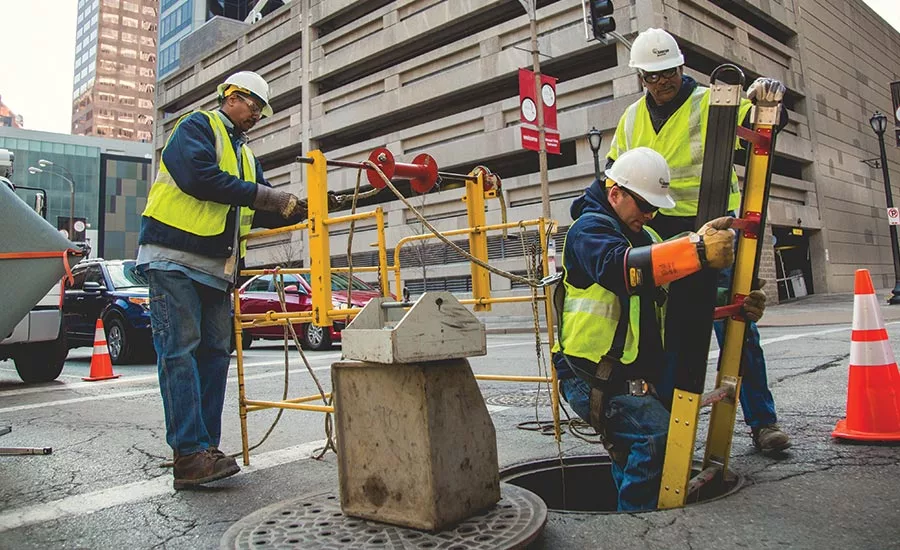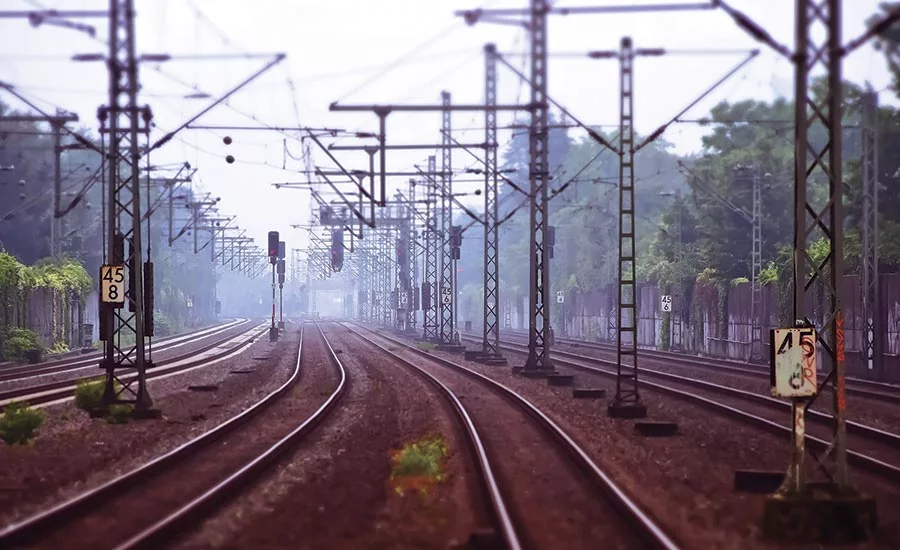Ensuring Physical Security of Lone Workers
Enterprises upgrade technology, equipment, training and policies to protect those on their own.

Utilities like St. Louis-based public power company Ameren have always needed to take all reasonable steps to protect the safety of one-person trucks that go out into the field to service trouble calls, including servicing areas under ground.
Photo courtesy of Ameren

Lone worker security is constantly on the minds of those who manage railyards.
Enterprises upgrade technology, training, equipment and policies to protect those on their own.
Utility technicians, home health nurses, retail stockroom employees, rail yard maintenance personnel and prison guards all have at least one thing in common: They often work alone, outside the sight or sound of another colleague. The settings in which they perform their duties are fraught with potential dangers ranging from active shooters to environmental hazards.
Security executives in these and many other industries are continuously working to improve the safety of such lone workers – estimated by Berg Insight to comprise 15 percent of the total workforce in Europe, the United States and Canada, or about 53 million people. It will be done by upgrading equipment and technology and ensuring adequate training of these workers and their colleagues and rethinking policies and procedures.
As the number of lone workers has grown, the market for lone worker protection solutions that provide two-way, location-aware mobile communications has followed suit, according to Berg Insight. The firm predicted that the number of users of dedicated devices based on GPS and cellular devices would grow from 500,000 in 2017 to 1.1 million by the end of 2022 in Europe alone.
Utility Worker Safety
Utilities like St. Louis-based public power company Ameren have always needed to take all reasonable steps to protect the safety of one-person trucks that go out into the field to service trouble calls, says Michael Marx, manager, crisis management. “Times have changed,” he says. “The dangers, the risks, the threats are more prevalent than they’ve ever been. No matter what we do, our focus first and foremost is on keeping people safe.”
Whenever a potential threat arises, Ameren has deployed the critical event management platform from Everbridge to enable lone workers to communicate, or receive, emergency or other high-profile messages using their cell phones.
“We can get that information to them in as close to real time as possible with Everbridge,” Marx says. “We use the NC4 tool that provides threat and incident information on a wide variety of different kinds of events.”
Ameren undertakes ongoing training of lone workers and those with whom they interact, Marx says. “For instance, how to recognize when somebody might be under stress – how to remove themselves from a situation with a customer that gets threatening,” he says. “We do active shooter training; it’s not just our workers in the field who might be subject to threats. We put various kinds of safety messages [online] on a recurring basis, just to keep things fresh, at the forefront of people’s radar.”
Among the company’s policies regarding lone worker safety is that a second worker will be dispatched anytime a lone worker says they do not feel comfortable going into a given area. “No questions asked – if you say you need a second person, that person is provided to you,” Marx says. “If they feel the conditions around their job have turned threatening, they have the freedom to close out that job and get safe as quickly as possible.”
The Railyard Environment
Lone worker security is constantly on the minds of those who manage railyards like Progress Rail, a subsidiary of Caterpillar Co., according to David Brecheen, environmental health and safety manager at the company’s repair and maintenance shop in Amarillo, Texas.
Although physical threats are always possible, the top concern tends to be the environmental hazards associated with confined space employees who handle pressure washing, painting, welding or other mechanical work inside of rail cars. “Our concern for workers in confined spaces is that the air stays safe,” he says. “If they see something that’s not right, they can sound the alarm.”
Progress Rail uses an air monitoring system to detect any atmospheric or environmental problems that could occur and TPASS, a GPS communications system that alerts supervisors when something might be amiss.
The system monitors every TPASS and pagers to ensure they are working correctly and each is numbered by employee so everyone knows whose alert is being sounded, Brecheen says.
The company offers annual and quarterly sessions that cover safety issues extensively such as confined space safety, new features of the TPASS and how to use equipment provided by the company. Supervisors take classes that cover supervisor and rescue training along with first aid and CPR classes.
Keeping Safe in Corrections
Attacks by individuals are definitely the focus of lone worker protection at correctional sites, whether adult, youth or mental health oriented, where all employees wear some sort of protection, according to Bob Buher, operations manager, real time locating systems at Securitec One, a dealer for CenTrak Security Systems.
“These devices are used not only when there’s a personal attack by an inmate or a patient, but also if a fight breaks out that they’re not involved with, if inmates get into a fight two or more at a time, they can use these devices to call for assistance,” he says.
Lone worker devices have evolved over the past 20 years from battery operated “screamers” that just made noise but were not networked, to radios that had panic buttons but no location-specific information, to the real-time locating systems of today, Buher says. “When someone is getting attacked, seconds count,” he says. “Personal protection devices are constantly transmitting, sending messages to the server about location. Such location-enabled devices were once resisted by correctional unions concerned on their members’ behalf that ‘Big Brother’ is watching me,” Buher says.
Personal protection systems have no room for error, Buher notes. “When you’re protecting lives, you want to make sure that they can go home to their family at night,” he says. “The technology has gotten so good; we’re going to see more and more applications in the future, as America tries to do more with fewer workers.”
Looking for a reprint of this article?
From high-res PDFs to custom plaques, order your copy today!




